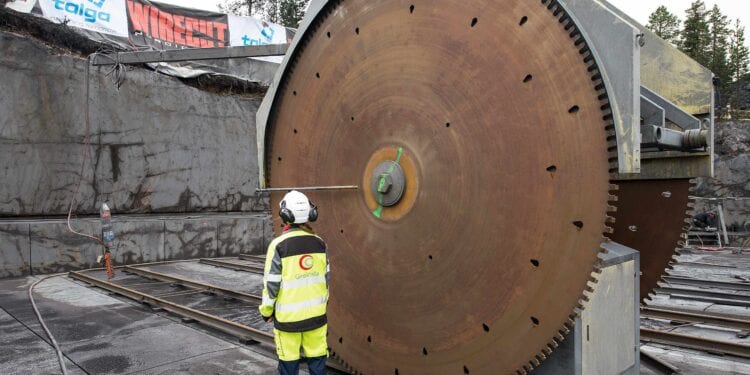Outlines Pathway To Global Battery Anode Production
Battery anode company Talga Group Ltd (ASX:TLG) has completed a scoping study on the Niska South, Niska North and Nunasvaara North graphite resources in northern Sweden.
Key outcomes from the Study demonstrate strong support for a stand-alone mine and anode refinery, with robust economics driven by high graphite resource grade, high anode product yields and vertical integration capturing full margins of the anode value chain.
The company sees the Study as an important milestone towards adding significant future anode production capacity. The Niska production, planned for 2025 onwards, when combined with the existing Vittangi Anode Project operation, would form the largest natural graphite anode producer in the world and largest anode producer outside China1.
The Niska Scoping Study is underpinned by a mining study of the Niska South, Niska North and Nunasvaara North graphite deposits of Talga’s 100% owned Vittangi graphite project in northern Sweden completed by Golder (UK).
Golder utilised the combined Niska JORC 2012 resources to optimise in-situ underground mineable mineralisation of 5.1Mt @ 28.7%Cgfor the Study (which excludes resources from the Nunasvaara South deposit, currently progressing separately through detailed feasibility work) at a mining rate of 400,000 tonnes per annum (tpa).
The Study demonstrates average annual pre-tax free cashflow under steady state base case operation of US$690 million per annum over 14 years life of mine, with estimated average cash cost of US$2,380/t coated anode (Talnode-C) and graphene (Talphene) products.
The Project benefits over existing global suppliers in having higher resource grade, higher anode yield, lower production cost, 100% sustainable power and production location proximal to transport infrastructure and customers. Key Niska Scoping Study outcomes include:
- Positive scoping study supports stand-alone production of ~85,000tpa anode product Talnode-C and ~8,500tpa Talphene for silicon anodes using Niska graphite deposits
- Niska to add to existing Vittangi Anode Project, towards total >100,000tpa anode production by 2025-26, defining path for Talga to become the largest Li-ion battery anode producer outside China2
- Favourably located in a tier-1 investment jurisdiction, Sweden, with access to low cost 100% renewable energy supply and proximity to European battery markets
- Study show robust stand-alone economic outcomes, in addition to the existing Vittangi Anode Project, including pre-tax outcomes of:
o NPV8 range of US$2.4 to $4.6 billion with base case US$3.5 billion
o Base case IRR of 47% and post-commissioning payback 1.7 years
o Base case free operating cash flow US$690 million per annum under steady state operation
- Study based on 14 year mine-life 400,000tpa underground development of in-situ 5.1Mt @ 28.7% graphite with >98% in the Indicated Mineral Resource category
- Underground development reduces surface impacts by 75% and decreases LOM operating costs – deposits remain open with significant potential to add further resources, mine-life and scale
- Existing relationships with potential strategic partners including Swedish state-owned mining and minerals group LKAB and global trading and investment company Mitsui
- Next stage work includes expansion resource drilling and studies to support lodgement of exploitation concession permits by mid-2021
Whilst the Study has been constrained to a 400,000tpa mining and concentrator throughput towards 85,000tpa Talnode-C anode production and 8,500tpa of Talphene production, there are no identified technical restrictions to further increase the throughput rate with additional expansion, subject only to further product validation and purchase agreements underpinning demand. All graphite deposits in the Study remain open along strike and at depth, with extension targets having been defined and awaiting further drilling in early 2021.
The Niska production would add to the existing 19,000tpa Vittangi Anode Project, to take total Talga Group Talnode-C production to >100,000tpa by 2025-26.












